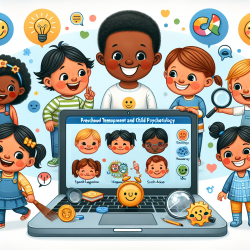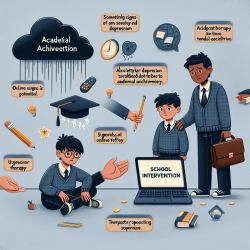As practitioners dedicated to improving outcomes for children with Autism Spectrum Disorder (ASD), it is essential to continually refine our therapeutic approaches based on the latest research. A recent review article titled Selected Methods of Therapeutic Interactions With People With Mild Symptoms of Autism Spectrum Disorder offers valuable insights into evidence-based methods that can be implemented in therapeutic settings. This blog post aims to distill key findings from this research and provide actionable strategies for enhancing therapeutic interactions with children exhibiting mild symptoms of ASD.
Key Therapeutic Methods
1. TEACCH Program
The TEACCH (Treatment and Education of Autistic and related Communication-handicapped Children) program has demonstrated significant effectiveness in improving the independence and social functioning of children with ASD. Key components include:
- Individualized intervention programs
- Parental involvement and training
- Use of visual aids and structured environments
2. Cognitive-Behavioral Therapy (CBT)
CBT is particularly effective for adolescents and adults with mild ASD symptoms, including those with Asperger's Syndrome. It addresses:
- Misconceptions and cognitive deficits
- Emotional regulation and social interaction skills
- Anger management and stress tolerance
3. Social Stories Program
This program involves creating and using stories to help children understand and appropriately respond to social situations. Benefits include:
- Improved social understanding
- Enhanced ability to respond to emotional cues
- Increased self-esteem and positive self-image
4. Sensory Integration Therapy
For younger children, sensory integration therapy can be crucial. It focuses on:
- Improving coordination and sensory processing
- Developing tolerance to various stimuli
- Enhancing motor skills and overall development
5. Animal-Assisted Therapy
Interactions with animals can provide emotional and sensory benefits. Key points include:
- Improved mood and social interaction
- Enhanced sensory integration
- Reduced anxiety and loneliness
6. Information Technology
Utilizing blogs and other digital media can help children with ASD develop communication skills and self-identity. Benefits include:
- Increased self-confidence and self-esteem
- Enhanced social interaction through indirect communication
- Development of a positive self-image
7. Neurofeedback
Neurofeedback, or brain-computer interface (BCI), offers promising results in improving cognitive and behavioral functions. Key benefits include:
- Improved attention and concentration
- Enhanced emotional regulation
- Increased self-regulation of mental states
These methods, supported by rigorous research, provide a comprehensive toolkit for therapists working with children with mild ASD symptoms. By integrating these strategies into your practice, you can significantly enhance the therapeutic outcomes for your young clients.
To read the original research paper, please follow this link: Selected Methods of Therapeutic Interactions With People With Mild Symptoms of Autism Spectrum Disorder.










